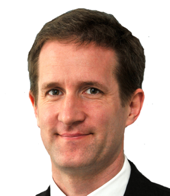With the issuance of the December Synthesis report by UN Secretary-General Ban Ki-moon and the recent start of negotiations in the General Assembly we are entering the final stretch towards the adoption of the Sustainable Development Goals (SDGs). These goals will pick up from the successful Millennium Development Goals that expire of this year to guide international collaboration among governments, business, and civil society towards sustainable development. Well-crafted SDGs will mobilize expert communities around practical solutions and goal-based strategies.
Much has been accomplished since the 2012 Rio+20 Summit resolved that action-oriented SDGs be adopted in 2015. Following an unprecedented mobilization of expert communities, UN member states have agreed on a set of 17 goals that map out a compelling agenda for sustainable development. Notably, the goals proposed by the Open Working Group on the SDGs assign a central place to sustainable agriculture, food security, and nutrition. Yet, more work is needed to make the SDGs effective. Three major challenges stand out:
1. Making the SDGs Easy to Communicate
First, the latest draft of the SDGs maps out the right agenda for sustainable development, but the in their present form the goals are not easily communicable. The MDGs were successful because the eight goals were worded concisely. The question therefore is how the draft SDGs can be rearranged for communication purposes into perhaps twelve goals that are worded concisely. Critically, in such a process of rearranging goals the substance of the goals must not be changed – nothing of substance should be added or removed from the 17 goals proposed by the Open Working Group.
In his report the Secretary-General proposes six elements that can help organize the Goals: dignity, prosperity, justice, partnership, planet and people. Another option would be to combine goals that cover similar issues and to consider short forms of these goals for communication purposes. Either approach is possible, and both should probably be pursued to overcome the political and substantive challenges of rearranging the goals in a way that finds consensus among UN member states. The ball is now firmly in the court of member states who will conclude the SDG negotiation over the coming months. As input into these discussions it might be helpful to outline various options of how the 17 draft goals can be consolidated. Similar work needs to be done at the level of the targets, since the proposed 169 targets are simply too many.
2. Monitoring Framework for the Goals
A second major challenge for the SDG process will be to develop an effective monitoring framework, including clear indicators. As outlined by the Secretary-General such monitoring and review of progress need to occur at the national level where the central locus of accountability resides. Since no country can achieve the SDGs on its own, success will also require effective reporting and progress reviews at regional and global levels.
In addition, under the leadership of relevant UN organizations, the key thematic communities, such as health, education, or agriculture, should establish monitoring frameworks for the Goals. The Secretary-General has called for multi-stakeholder processes to identify the best metrics. This work must be undertaken and concluded quickly, so that the world can start implementing the SDGs in early 2016. As our contribution, the Sustainable Development Solutions Network has just issued a draft report outlining a set of 100 Global Reporting Indicators for the SDGs. We welcome comments on this draft report through a public consultation until 31 January 2015.
3. Financing the SDGs
A final challenge lies in financing the SDGs. To this end member states will convene in Addis Ababa in July for the third Conference on Financing for Development. To support the achievement of the SDGs the Addis conference will need to resolve how the orders of magnitude of financing – public and private – can be mobilized. It will also need to outline how the artificial distinction between “development finance” and “climate finance” can be overcome. In addition, the international community will need to decide how the financing – in particular public financing – can be organized and disbursed effectively.
These questions are complex and require carefully tailored answers for each sector or set of issues. We outline some ideas for discussion and improvement, including implications for agriculture and nutrition, in an SDSN background paper available here. The three outstanding challenges – communicable goals and targets, effective metrics, and an operational financing framework – can be addressed over the next twelve months if we put our minds to them. This will put the world in a good position to start implementing the SDGs in early 2016 and to begin the shift towards a sustainable development pathway.



